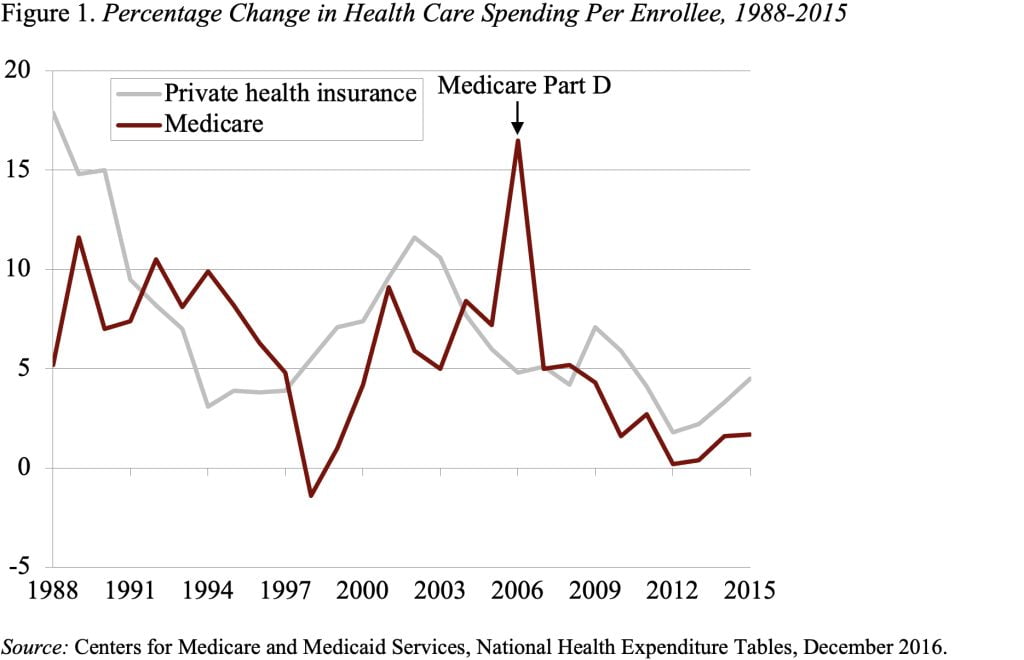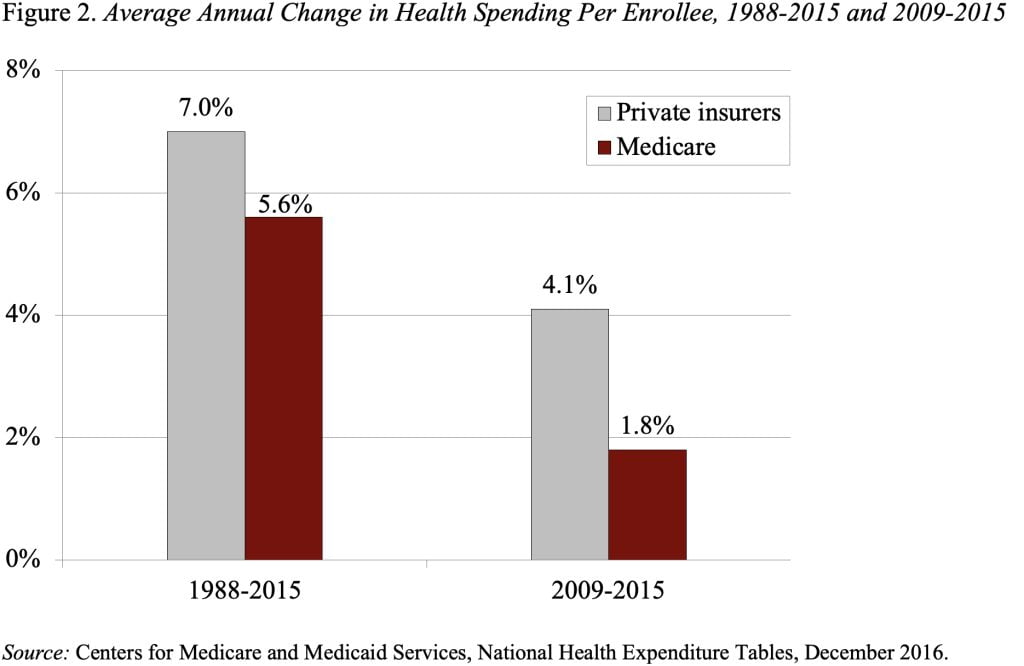
If You Care About Cost Control, Don’t Mess with Medicare
Alicia H. Munnell is a columnist for MarketWatch and senior advisor of the Center for Retirement Research at Boston College.
The program has lower spending growth than private insurance.
Speaker of the House Paul Ryan is proposing a big change to Medicare as part of the broad-ranging Better Way plan. Under the current Medicare program, the government provides health insurance for people 65 and over and adults with disabilities. Under the Better Way plan, the government would provide a voucher, and the elderly and disabled would select a plan from a private insurer. Speaker Ryan argues that this change will help make the Medicare program more fiscally stable.
But as Melissa McInerney, a Tufts University professor who studies the Medicare program, pointed out to me: Medicare spending grows more slowly than private insurance spending (see Figure 1).

Slower growth for Medicare is not a new phenomenon. Between 1988 and 2015, private insurers experienced average annual increases in spending per enrollee of 7.0 percent, while annual increases in Medicare spending per enrollee averaged 5.6 percent (see Figure 2). And Medicare’s performance has been even better recently. Since 2009, the rate of growth for Medicare has been less than half of that for private insurers (4.1 percent per year for private insurers versus 1.8 percent per year for Medicare).

Medicare’s lower growth rate is really remarkable for two reasons. First, the numbers include the big increase in Medicare spending in 2006 due to the introduction of the Prescription Drug program (Medicare Part D). Second, the populations that Medicare covers – people over 65 and individuals with disabilities – have significant health care needs compared to the population covered by private insurance. Yet, spending growth among private insurers has significantly exceeded that in the Medicare program.
If the annual percentage increase in costs for private insurers – who cover a population with fewer health care needs – already outpaces Medicare spending growth, their costs are likely to rise significantly faster when they cover a costlier population. Under the voucher plan, the government can keep its costs low by limiting the size of the voucher, but that strategy would only lead to an enormous financial burden falling on vulnerable elderly and disabled individuals.
The only way to win the health insurance game is to get the costs of health care under control, and the numbers say that Medicare is a much more effective mechanism than private insurance. People who care about cost control should move cautiously when messing with Medicare.







